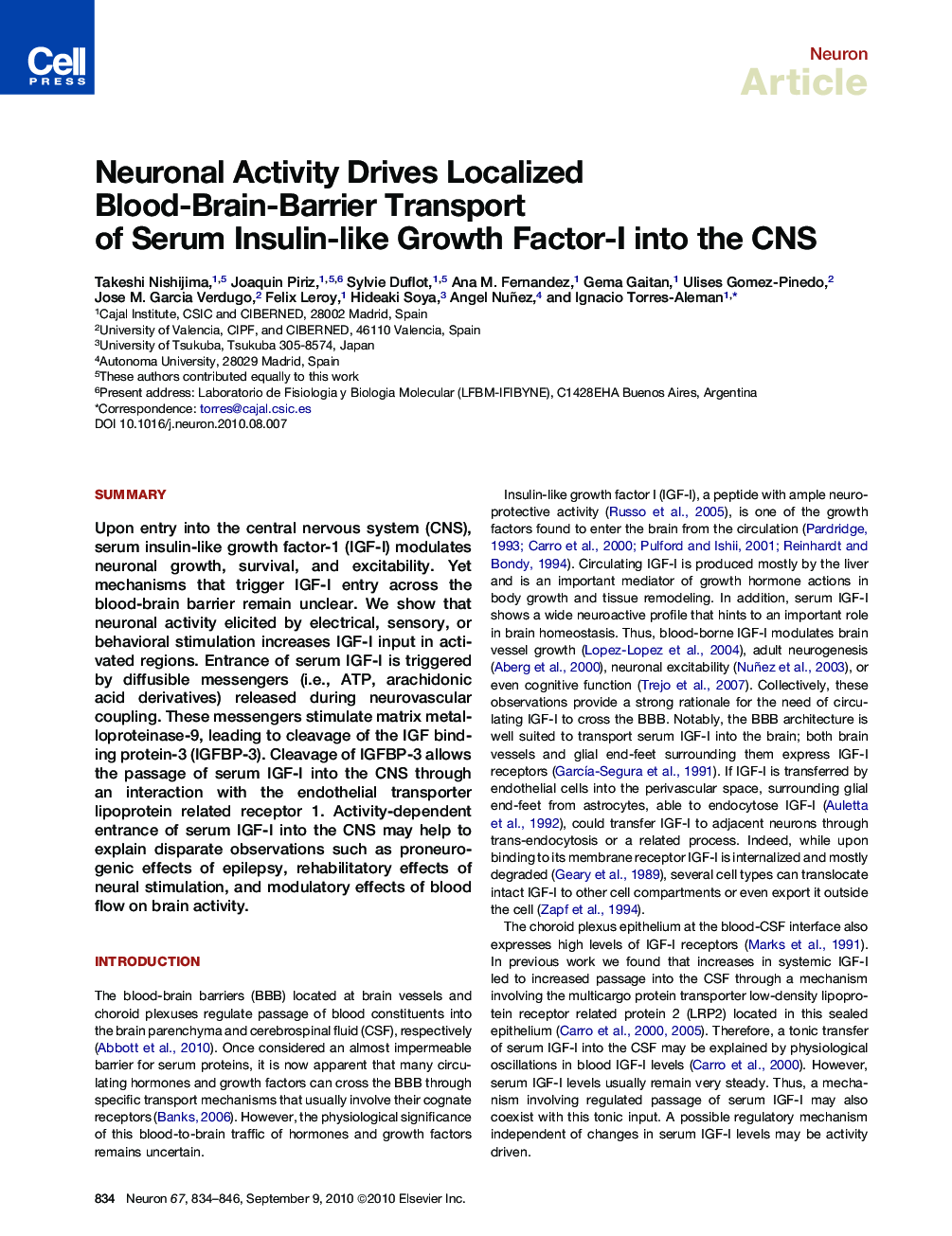| Article ID | Journal | Published Year | Pages | File Type |
|---|---|---|---|---|
| 4321922 | Neuron | 2010 | 13 Pages |
SummaryUpon entry into the central nervous system (CNS), serum insulin-like growth factor-1 (IGF-I) modulates neuronal growth, survival, and excitability. Yet mechanisms that trigger IGF-I entry across the blood-brain barrier remain unclear. We show that neuronal activity elicited by electrical, sensory, or behavioral stimulation increases IGF-I input in activated regions. Entrance of serum IGF-I is triggered by diffusible messengers (i.e., ATP, arachidonic acid derivatives) released during neurovascular coupling. These messengers stimulate matrix metalloproteinase-9, leading to cleavage of the IGF binding protein-3 (IGFBP-3). Cleavage of IGFBP-3 allows the passage of serum IGF-I into the CNS through an interaction with the endothelial transporter lipoprotein related receptor 1. Activity-dependent entrance of serum IGF-I into the CNS may help to explain disparate observations such as proneurogenic effects of epilepsy, rehabilitatory effects of neural stimulation, and modulatory effects of blood flow on brain activity.
► Serum IGF-I enters into the brain on demand ► Neuronal activity specifies the sites of entrance of serum IGF-I ► Activity-dependent entrance of serum IGF-I involves a glutamate-dependent process
